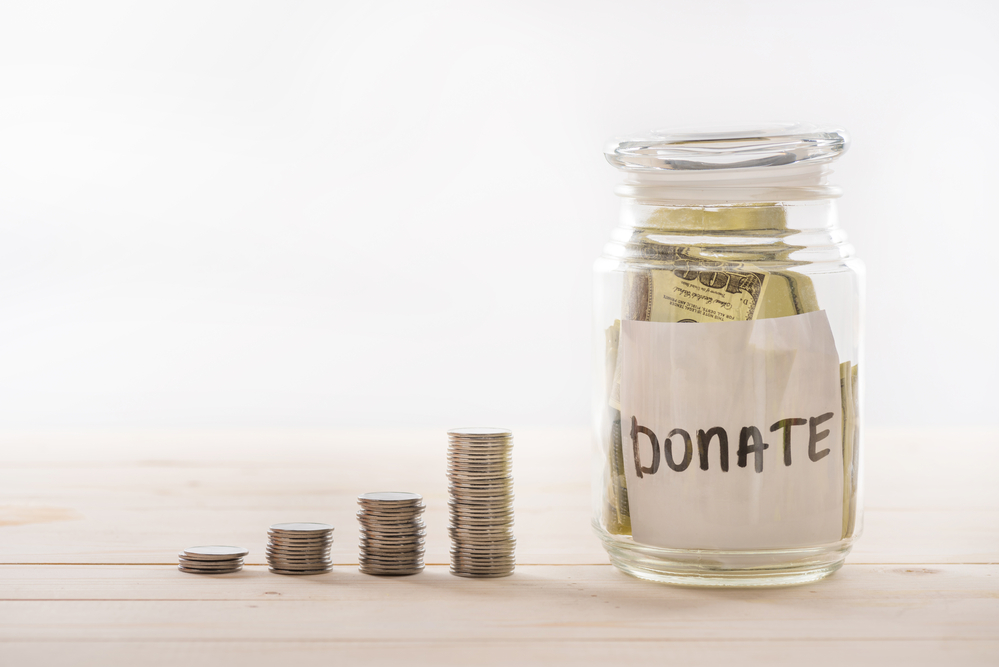How to Steward Major Gifts With Your Nonprofit CRM

Whether your nonprofit is planning a capital campaign or just fundraising to cover your general programs, major gifts can help you make significant progress toward your goals. They provide a boost that can propel the rest of your fundraising efforts forward.
However, major gifts can be hard to acquire. Wouldn’t it be nice to steward major gifts using a comprehensive software solution that you’re already leveraging for other fundraising operations?
You’re likely using a robust nonprofit constituent relationship management (CRM) solution to manage your donors and engage supporters. But did you know that the same technology can help you identify and nurture major gift donors? In fact, a nonprofit CRM can take a lot of the heavy lifting off your plate.
In this guide, we’ll explore the four steps you should follow to steward major gifts using your nonprofit CRM.
1. Segment your donors
Before you can ask for major gifts, you’ll have to know where to find them. Use the data from your CRM to identify potential major donors and create segments based on their shared characteristics.
According to CharityEngine’s guide to the best nonprofit CRMs, robust communication management tools can help your nonprofit segment donors by pulling information directly from supporters’ profiles and recording their engagement.
Information to look for includes:
- Personal information: Basic details about a prospective donor can help you initially reach out to them, but can also indicate other details that might be useful for engaging supporters. For example, you might learn more about supporters’ hobbies and interests.
- Wealth indicators: Using publicly available information, gather indications that individuals have increased capacity to give. Real estate holdings, for example, can be excellent indications of wealth. Similar indicators include stock ownership or elevated positions in large corporations.
- Philanthropy indicators: Looking at donor lifetime value (LTV) can help you identify the donors most committed to your organization. Look at charitable giving to other or similar nonprofits and nonprofit board or trustee positions. Political giving is publicly available and is another indication of causes a donor supports.
Remember to keep your database hygienic when collecting information and segmenting donors. After all, prospect research will only be effective if your data is accurate and easily accessible. For example, you’ll want to clean out old email addresses or repeated data entries from your database.
2. Automate your outreach
Once you’ve identified potential major donors, it’s time to start soliciting donations. However, the list of potential donors may be long, and it can be time-consuming to send messages to everyone.
The right nonprofit fundraising software will not only collect donations, but also help you solicit them by automating marketing communications. This means you can create messages with ease and send them only to specific recipients that you’ve selected. The software should do the rest, filling in salutations with donors’ names and automatically sending messages to the right email addresses.
Don’t just stop at solicitations. You can also automate:
- Donation receipts: Automatically send an email to confirm you’ve received a donor’s gift.
- Campaign progress updates: Reach out periodically to let donors know how your fundraising campaign is going.
- Gift impact: Show donors the impact of specific gift sizes, with a special emphasis on what your organization could accomplish with major gifts.
Automated solicitations can help you engage major donors more effectively by standardizing important messages about your campaign. When they’re educated about the progress and potential of your fundraising efforts, donors will be more inclined to contribute a major gift and help your nonprofit reach its fundraising goals.
3. Personalize your follow-up
To make major donors feel appreciated for their significant contributions and to encourage them to stay involved with your organization, craft personalized messages to follow up with them after their donations. Your CRM can help you do this by allowing you to create customized email templates that display your nonprofit’s branding.
eCardWidget’s guide to donor recognition highlights the following best practices for personalizing your follow-up communications:
- Mention donors’ specific gift amounts. Thank them for the gift and reinforce how it will help your mission.
- Reference additional ways donors have contributed. For example, if the donor has volunteered with your nonprofit in the past, you might call out their involvement and thank them for giving in multiple ways.
- Offer new ways to get involved. Show donors the other activities that will help your mission. For example, they can support events, peer-to-peer campaigns, or volunteer.
You can also provide an update to keep major donors informed about the projects they’re helping to support. Show your optimistic leadership of an issue by addressing what work still needs to be done with a hopeful tone and a clear plan for helping the community. Donors will feel confident that they can trust your nonprofit to make a difference when you confidently approach the issue.
4. Track your progress
Keep track of your engagement with major donors to plan your next steps in acquiring future major gifts. Tracking a donor’s journey with your nonprofit can help you identify how to best engage them and the appropriate next steps for donor stewardship.
For example, your CRM should track:
- How often donors give
- How much was donated
- When major donations are made
Using this data, you can decide whether certain donors should receive thank-you messages or impact reports, or if it’s time to ask them to give again.
As you use your nonprofit CRM to steward major gifts, remember to be conscious of donors’ unique giving preferences. Some may prefer to participate in Facebook events, while others want to attend a fancy in-person gala. Leverage your CRM to keep track of preferences like these, making notes about each donor as you get to know them better. That way, you can alter your overall fundraising approach and maximize the donations you receive.